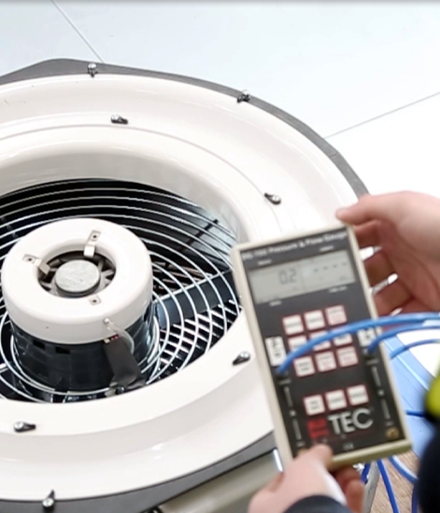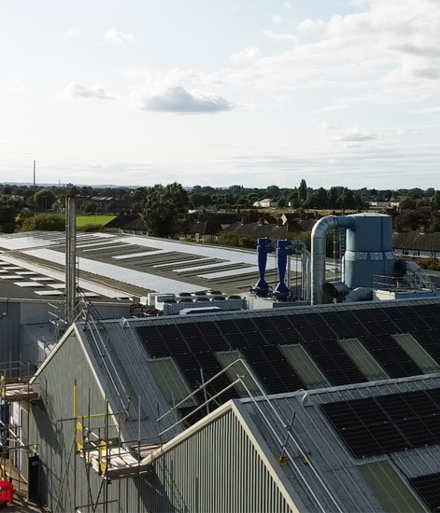
Environmental Product Declarations (EPDs) are now a fundamental part of sustainable construction, widely recognised and increasingly specified to help inform both procurement and building performance assessments. They contain vast amounts of important data about a product’s performance over its lifecycle, notably around its global warming potential/embodied carbon level, represented in CO2e.
What do construction professionals need to understand about EPDs? Which data sets do teams particularly need to pay attention to and why? And what questions need to be asked to gain a clearer picture of what is being presented and accurately compare products?
What are Environmental Product Declarations (EPDs)?
An EPD offers a structured and verified third-party summary of a product’s environmental impact across its lifecycle.
It is based on a Life Cycle Assessment (LCA) and calculated using recognised methodology to international standards, typically EN 15804 +A2 (rules for EPD’s regarding construction products) and ISO 14025 (principles and procedures for Type III Environmental Declarations) in the UK and EU.
The data is designed to give construction professionals a consistent basis for product comparisons, either to make informed decisions when purchasing a product, or in the context of a building’s whole-life carbon assessment scheme. Products with an EPD rating must have their embodied carbon values revalidated every five years.
We use the highly regarded One Click LCA as our provider for our existing lifecycle analysis evaluations across our raised access floors.
Why do EPDs matter?
In the context of achieving wider industry sustainability targets, EPDs are seen as vital. UK legislation is starting to tighten up, making requirements for transparent LCA reporting ever more pressing.
For example, currently under development are:
- Part Z regs to mandate whole-life carbon assessments
- The Net Zero Carbon Building Standard
- The Future Building Standard, which could make more explicit reference to LCAs
There is also a greater emphasis on reducing embodied carbon levels within the planning process. A good example is the Greater London Authority’s Whole Life-Cycle Carbon Assessment. Not surprisingly, most commercial projects in the capital are now targeting high sustainability ratings, such as BREEAM Excellent or Outstanding, where embodied carbon metrics contained within environmental assessments, like EPDs, are a key factor.
However, there is also a broader shift towards carbon reduction in the built environment, one that will underscore the importance of embodied carbon levels in the near future.

Why is a building’s embodied carbon so important?
There are two key elements within a building’s carbon reporting: its embodied carbon and the carbon associated with its operations, i.e. the energy used to run the building.
As buildings become more energy efficient and the electricity grid decarbonises, embodied carbon is set to take on a much larger share of a building’s lifetime emissions.
In fact, the UK’s Green Building Council predicts that by 2035, more than half of built environment emissions will come from materials and construction.
This trend means that the material choices made at design and procurement stages will play an even more decisive role in assessing a building’s carbon performance than operational energy over time.
It’s very important that industry professionals are able to accurately assess the reported embodied carbon data within different product EDPs to keep these levels as low as possible.
How do EPDs present sustainability data?
While EPDs follow a common format, the technical language and level of detail within each can be hard to navigate and understand, particularly for individuals who are not sustainability specialists. What’s more, EPDs present a lot of data, which often has to be processed across hundreds of different products in a project.
The most relevant standard for the EU, EN 15804 +A2, defines impact categories, timeframes and lifecycle stages in detail, but it can be difficult to understand how to apply this to get accurate product comparisons.
It’s also worth noting that other export markets, such as the US, use different systems. For example, LEED assessments apply different standards and reporting structures.
What’s (arguably) the most important EPD dataset?
Global Warming Potential (GWP) is among the most closely scrutinised and applied data within an EPD in the built environment.
It is expressed in kilograms of CO₂ equivalent per declared unit, and understanding this unit is key to making fair product comparisons. Apparently identical products can report their GWP figures based on very different declared units (there are various declared unit options, including but limited to: m2, m3, kg, per product, and per panel). One raised access floor manufacturer might declare per m², while another may use per panel.
Unless these declared units are identical, comparing their GWP data won’t give a meaningful result and may even be misleading.
For accurate analysis:
- Check that declared units match when comparing similar products. If they don’t, convert the data to a common baseline, for example, per m² or per 600 x 600 mm panel.
- Look for the total A1-A3 figure in the GWP breakdown. This reflects carbon emissions from raw material extraction, transport and manufacturing, which are the stages most relevant to early project decision-making.
- Confirm the publication date. Third-party verified EPDs are valid for five years. If the EPD is older than that, it should be considered out of date and not used for modelling or assessment purposes.
What is Tate doing to support EPDs?
In line with our values, we believe we have a responsibility to present product data in a way that helps and supports effective and accurate decision-making across the industry.
We have a long-standing relationship with EPDs having started working on assessments for our raised access floors around 2011 and we’re committed to helping clients make the most of them.
We consider EPDs to be a vital tool, helping to underpin our commitment to developing low embodied carbon (LEC) flooring solutions, including our award-winning RMG600+ raised access floor panel.
Our EPDs are easily accessible on each product’s webpage, and we’re also working on ways to simplify how we present the data to better support tender responses and whole-life carbon modelling.
In conclusion
EPDs are vital tools in our drive to decarbonise the built environment but their value depends on their correct application.
Understanding variables such as declared units and data expiry dates is key to drawing fair and useful comparisons between products and materials.
As the drive for lower-carbon construction intensifies, the ability to interpret EPDs confidently and consistently will become ever more important.
We’re here to support that process, not just by publishing the data, but by making it easier for the industry to apply it.
Our team has helped countless architects & specifiers achieve the best possible raised access flooring performance.
Contact our Specifications Team today to discuss your project.







